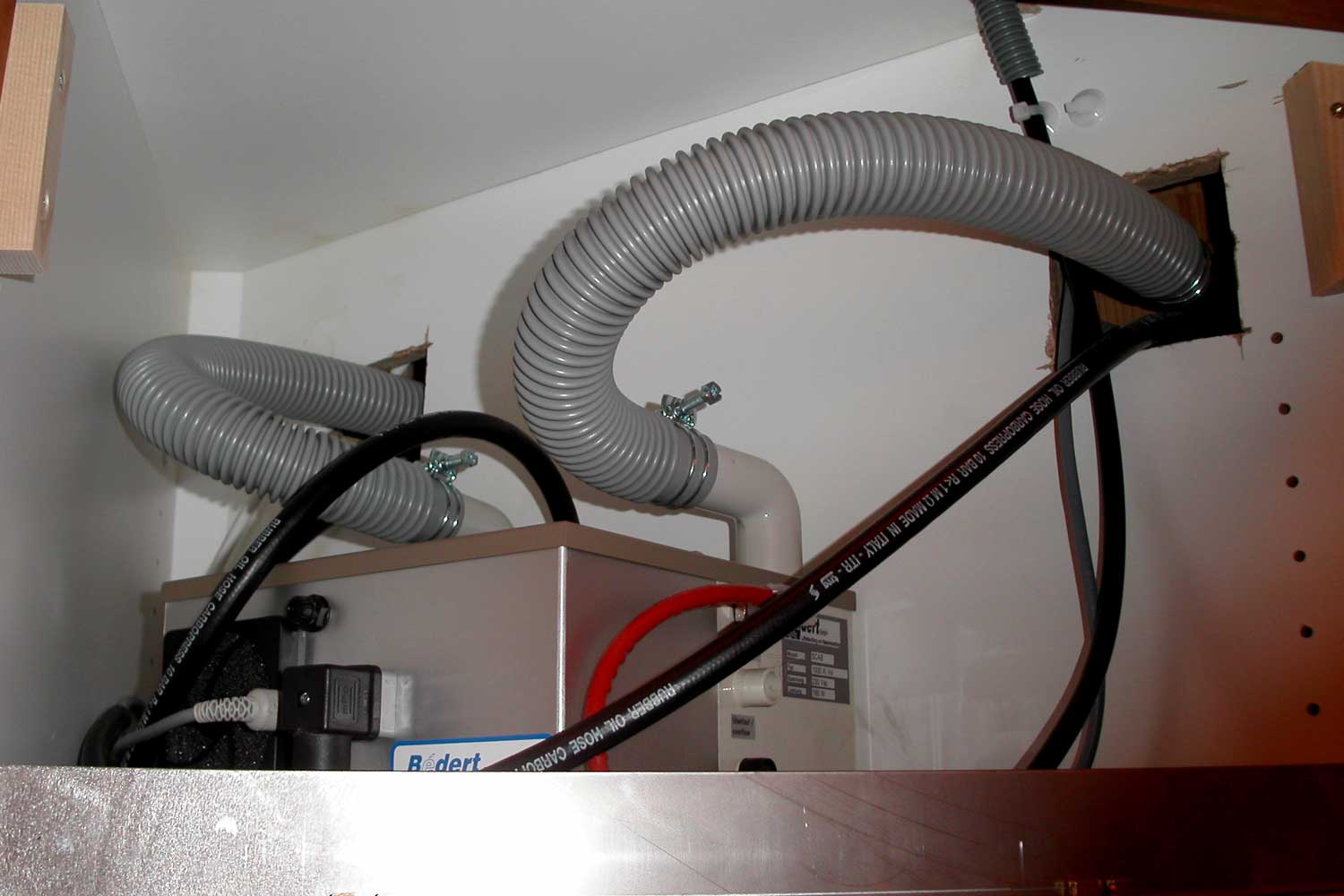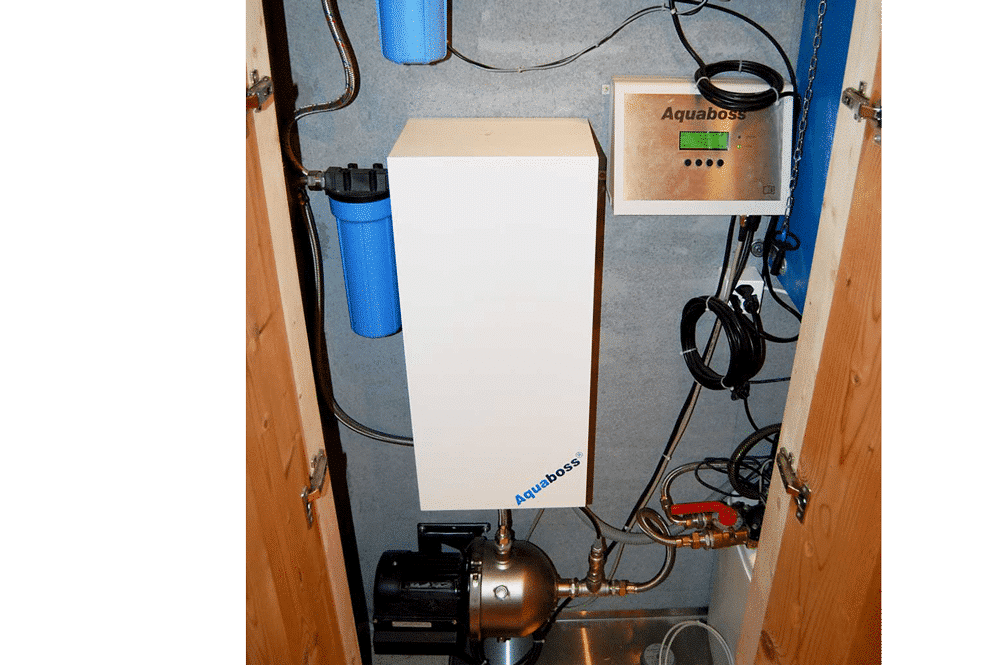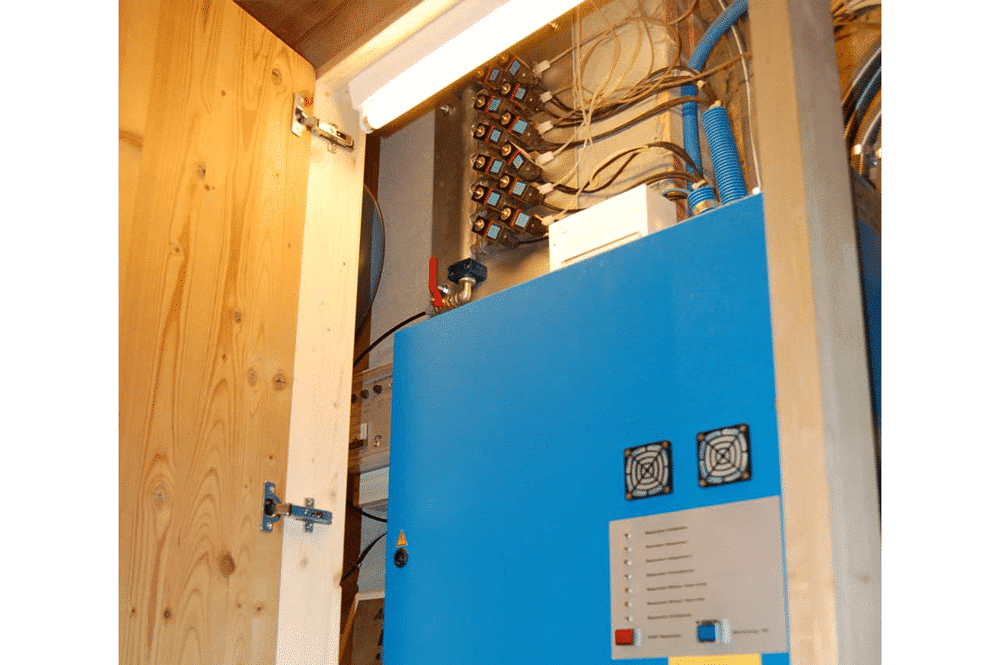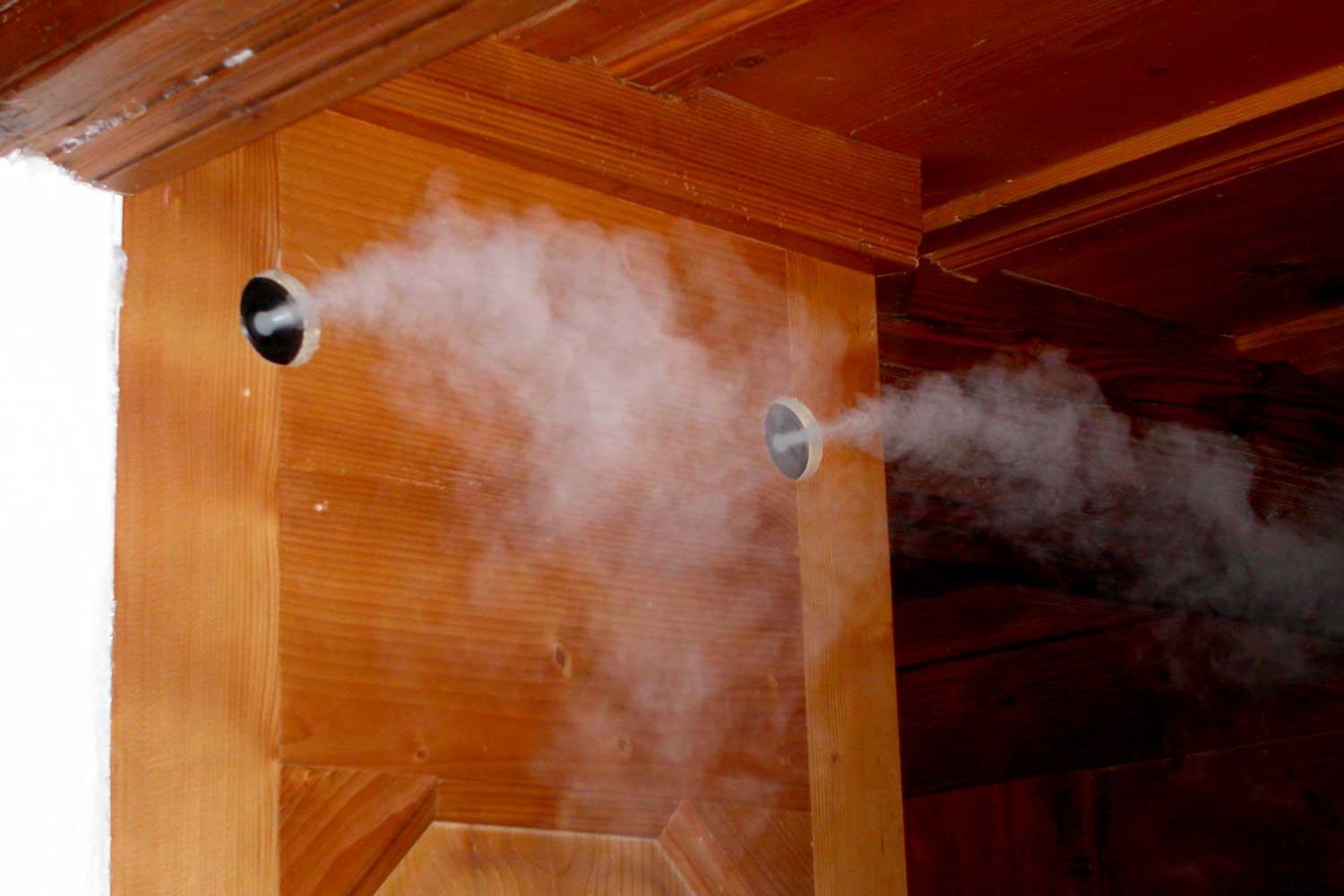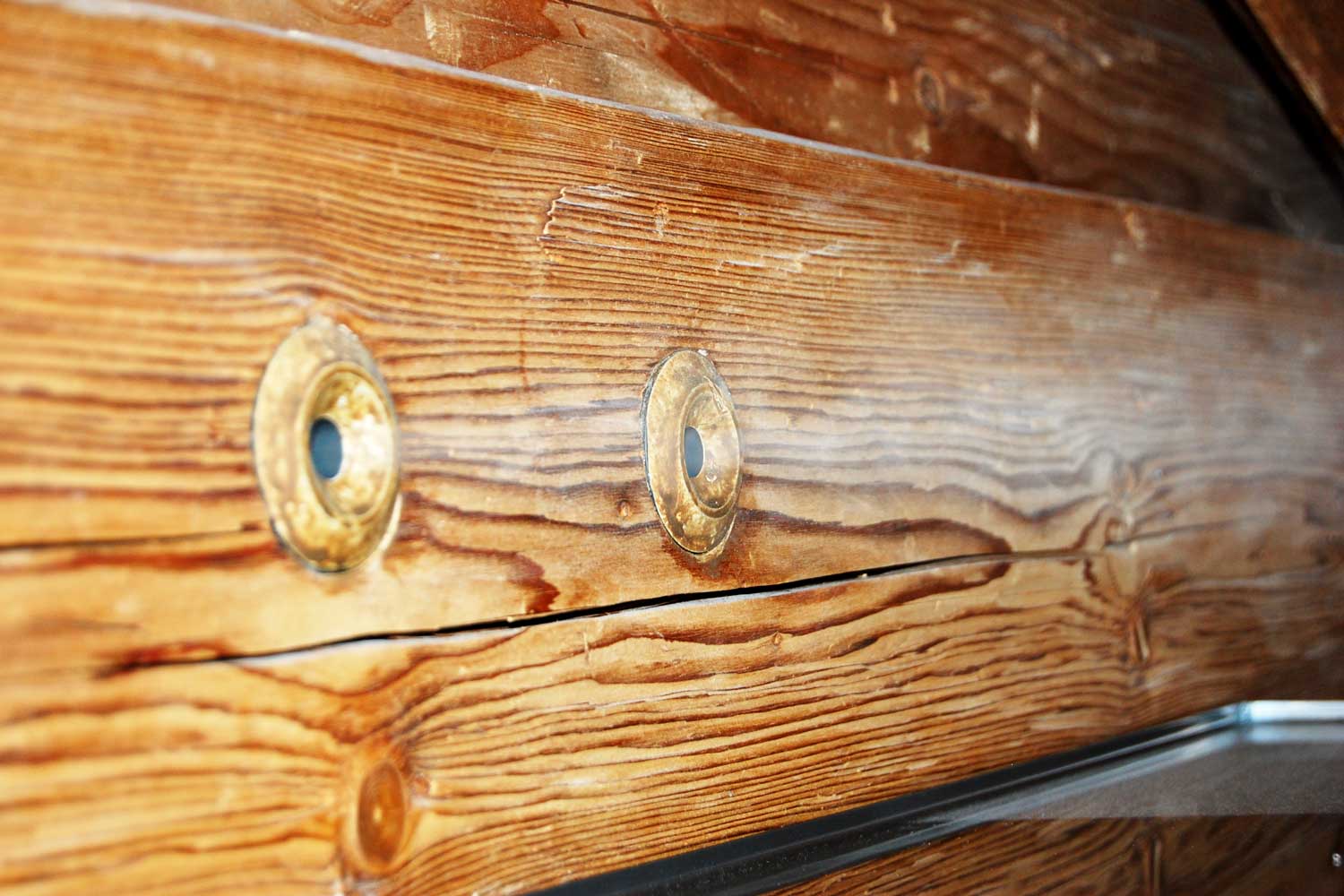Humidification Systems
Wälti | Ventilation and Air Condition Technology AG – Stainless Steel Center
What is air humidity?
Air consists of a variety of gases. ne of these gases is water vapor, which accounts for 0.1 to 0.3 percent of air volume. The amount of water vapor in the air determines humidity. However, humidity is not only a factor of the amount of water vapor, but also of air temperature. The following terms and examples describe the fundamental relationship:
1. Absolute humidity
Absolute humidity refers to the total amount of water contained in a certain amount of air volume in the form of water vapor (for example, 8 g/m3).
2. Relative Humidity
Relative humidity describes the amount of water vapor in a specific volume of air in relation to the maximum amount of water vapor that particular volume of air can absorb at a certain temperature (for example, 55 % relative humidity). The “percentage of saturation” of the air with water vapor is influenced by air temperature: because of the higher energy concentration of warm air, it can absorb a greater amount of water vapor than cold air.
3. Example
If a room is air-tight, it has a constant absolute humidity: water can neither be absorbed nor released from the environment. Now, if you raise the temperature in the room through heating, the relative humidity will sink, because the heated air is capable of absorbing more water vapor than the closed-off room has available. When you open the windows in winter to “quickly air out the room”, the air becomes even dryer than before. Because of the higher vapor pressure of the warm, dry indoor air, the remaining humidity escapes to the outside (see illustration below). The relative humidity in the interior space unintentionally sinks lower.
This explains why, especially in winter, indoor air is often extremely dry unless it is actively humidified.
Healthy indoor environment with optimal humidity
Known as “sick building syndrome”, it has long been recognized that poor air quality in office buildings can have serious adverse effects on the wellbeing and health of employees: headaches, fatigue, red eyes, and irritation of airways are common symptoms. The usual culprits are insufficient ventilation, excessive room temperature, chemicals (for example, ozone released by printers and copiers), as well as inadequate air conditioning systems. Additionally, there is a frequently overlooked factor that is also important for a healthy indoor climate: humidity.
Optimal humidity ensures properly functioning mucous membranes
Nose and throat specialists have warned for years that dry, heated air with a relative humidity of less than 55% can increase the susceptibility to and spread of colds and other respiratory infections. The first warning signs emitted by the body in response to low relative humidity include difficulty swallowing, excessive thirstiness, dry skin, and painful dryness in the nose and throat. Even at this stage, the protection function of mucous membranes in the airway is severely compromised by the dryness of the air: germs and bacteria present in the air can enter the dried out membranes and trigger diseases like the flu and a broad range of respiratory infections. Furthermore, for professionals whose job requires a great deal of speaking, vocal cords can also be adversely affected by dry air.
Sanitation and maintenance are key
To ensure sanitary and low-maintenance operation of a humidification system, a water conditioning unit is often required. As water vapor is misted into the room, all the contents of the water, including all minerals contained therein, are disseminated as well. The quality of the water is thus an issue of primary importance. Common complaints with hard water are irritation of the eyes and airways. This is caused by the minerals that are released into the air. Hard water may also cause greater corrosion of machines and devices. Hard water may also cause greater corrosion of machines and devices. Distilled water from a Bédert reverse osmosis unit vaporizes without leaving any residue.
With our expert partner, the company Bédert AG, we can provide you with a broad spectrum of humidification solutions from planning through implementation.


